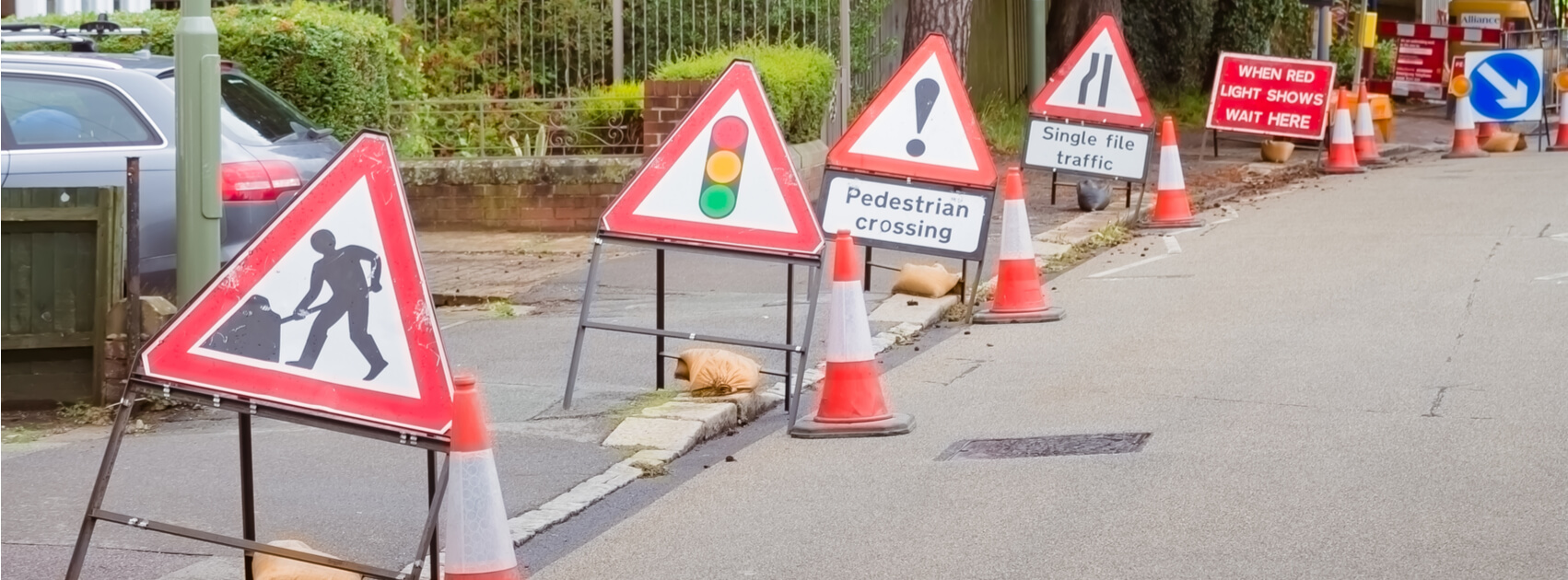A Brief History of UK Road Signs
55 years ago, the Worboys Report recommended a radical change to the UK’s road signs. The result is the road signs we see everywhere today.
When were road signs invented?
Modern road signs were implemented following the Worboys Report in 1963. The report called for a rationalised system of signage for a modern, mobile Britain.
Before 1963, road signs were a jumble of styles, icons and colours. If you crossed from one county to another, there was a chance you’d see a sign you’d never seen before!
With the rise of affordable cars and the development of motorways, it was clear that a more sensible signage system was needed. The UK needed a rational, consistent signage design that better suited the new, fast-moving Britain.
Who invented road signs?
The job of inventing modern road signs landed at the feet of Jock Kinneir and Margaret Calvert, two graphic designers who had seen success in developing Gatwick airport’s signswith their striking and simply yellow and black designs.
Colour of Road Signs
Primarily, the colour of UK road signs were chosen to make them clear and easy to read for drivers. It’s also a classic use of colour psychology (red for danger, green for go etc.) But why are motorway signs blue and Points of Interest brown?
The reasons were never really explained. Some have theorised that the road signs were coloured as a means of “branding” the UK, but in an interview in 2015, Calvert implies that this wasn’t necessarily the idea.
Motorway signs have white lettering on a blue background, like the sky of a summer’s day. Our road maps soon followed suit to match, making light blue the default colour for the depiction of motorways.
Primary destinations on main roads are white on green, with yellow used for the road numbers.
All other minor places and routes are shown as black on white.
In the 1980s, a government review concluded that the Worboys system was still working well, and could only make one small change in the addition of the white-on-brown signs for tourist information.
As motoring has become more complex, with the rise of smart motorways, electric cars and more cars on the road than ever, UK road signs have had to be adapted.
However, their simple, effective design has managed to suit the modern age. So much so, that it has been copied all over the world and after more than half a century in use, is still fit for purpose today.
Do Road Signs Work?
According to research from HPI, only 20% of drivers can identify the “mini roundabout” sign. Does this mean that road signs don’t actually work?
Given how long the road sign system has been running, it’s safe to say that it’s been a success. It has certainly helped road safety. There are three times as many vehicles on the road today than the 12 million when the Worboys report was enacted, yet the number of deaths is less than a quarter of what it was then.
Whatever the cause of accidents on the road might be, our road signs are not it.


